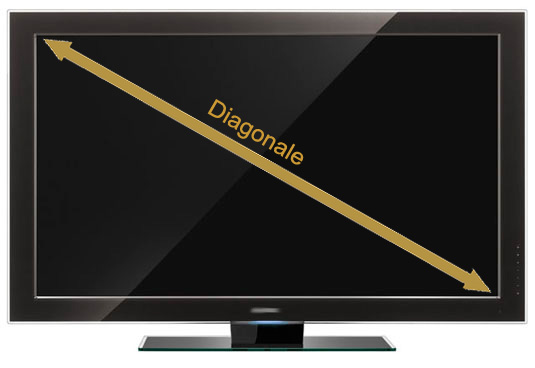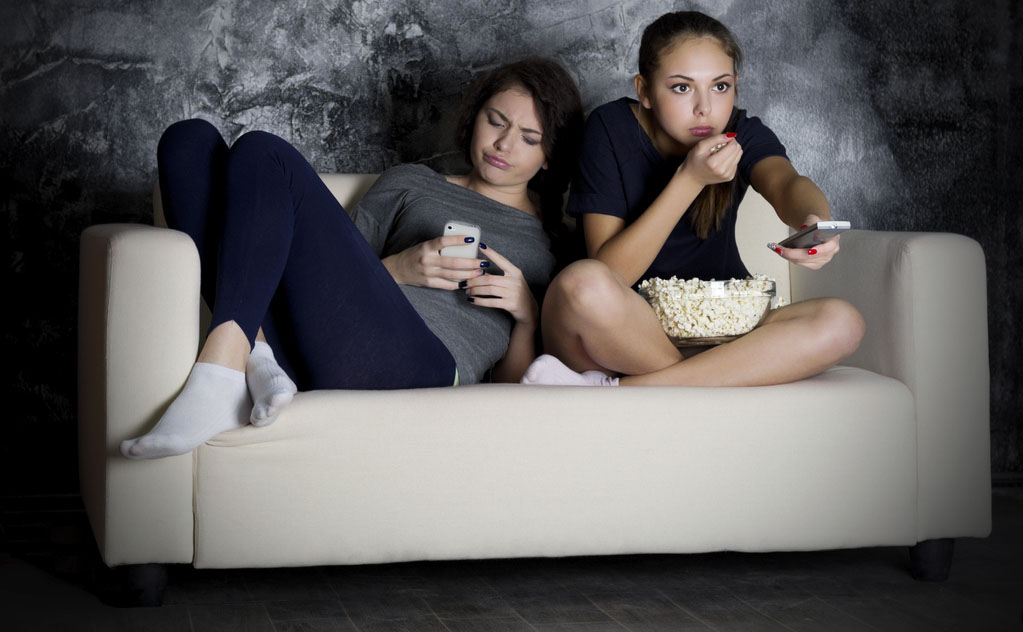In your living room, the sofa and the television form a great team to offer you good audiovisual moments. If you have carefully chosen one or the other for their intrinsic qualities, do you know that the combination of the two in terms of distance is also an important element for your comfort?

With the sofa and television both sitting opposite each other, the question arises of the distance to maintain between them. First, know that there is no approved scientific formula that will work in all situations. Each individual having their own vision, it is above all up to each person to experiment with the distance that suits them best. However, the characteristics of your television will give you clues to evaluate the optimal distance between it and you.
1. Parameters to take into account
Two parameters come into play to evaluate the ideal distance :- screen size
- screen resolution
The larger your television, the further away you will be able to get from it. Start measuring the diagonal of your screen (the length in centimeters which separates the upper left edge from the lower right edge of your screen). If you know the size of the television in inches, multiply that number by 2.54 to find the diagonal value in centimeters.
It is then appropriate to look at the screen resolution . The more pixels there are in an image, the better it is defined and therefore precisely perceived by the eye.
|
Kind |
Resolution |
TV-sofa distance |
|
SD |
720×576 px |
Diagonal × 3 to 4.5 |
|
HDTV |
1280×720 px |
Diagonal × 1.5 to 2 |
|
Full HD |
1920×1080 px |
Diagonal × 2 to 3 |
If your large television allows you to step back from the screen , it will nevertheless be appropriate if it is a Full HD TV not to move too far away otherwise you will not be able to perceive the subtleties of the image offered by technology. Conversely, if the program you want to watch or your TV has a low resolution, moving away from it will make it easier to see the pixels.

2. The importance of brightness
Evaluating the optimal distance is therefore a combination of your visual acuity, the size of your television, its resolution as well as the quality of the programs. Small screens and high resolutions tend to bring you closer, while large screens and low resolutions will make you take a step back. Your perception of the image will refine the optimal distance to adopt.
For greater comfort, make sure to create a balanced lighting atmosphere . Do not immerse the room in total darkness as the contrast with the screen brightness would then be too high. Likewise, dense lighting would disrupt the perception of the image, reflections should therefore be avoided. Choose subdued lighting which will highlight the image.
3. New screen technologies
Recently, a new screen technology with many advantages has appeared: curved screens. Why choose a curved screen rather than a standard flat screen?
The first quality that a curved screen has is a uniform viewing distance. Sitting in front of a flat screen, your vision is logically closer to the center of the screen. This is not the case for a curved screen because the entire surface is positioned equidistant from the viewer. This aims to improve visual comfort and reduce eye fatigue .
Other advantages, this type of screen recreates the panoramic effect of cinema screens, which allows everyone to enjoy the same image quality. An additional advantage is that this technology is less sensitive to reflections than traditional flat screens, which poison the moments of relaxation of any good movie buff.

If in a group you notice that you are the only person inclined to change their distance from the screen, do not hesitate to make an appointment with an ophthalmologist to have your eyesight checked. A change in the readability of screens which may thus reveal a decline in your visual acuity .
For the height of your television, check from your sofa that your eyes are approximately one third of the screen from the top, while the other two thirds will be in your lower field of vision. This bird's eye view will increase your visual comfort.
Last point, don't forget that too much visual strain risks tiring your eyes. They also need rest, so spare them by taking breaks.





 The up and down coffee table: practical on a daily basis for small homes
The up and down coffee table: practical on a daily basis for small homes
 Liftable table: which design to go with my sofa?
Liftable table: which design to go with my sofa?
 Liftable coffee table: round or rectangular? Our advices
Liftable coffee table: round or rectangular? Our advices
 Tips and good ideas for furnishing a studio for rental
Tips and good ideas for furnishing a studio for rental
 Quelle dimension de canapé choisir ? Le guide ultime pour un achat parfait
Quelle dimension de canapé choisir ? Le guide ultime pour un achat parfait
 Quelle couleur associer avec votre canapé vert foncé ?
Quelle couleur associer avec votre canapé vert foncé ?




















































